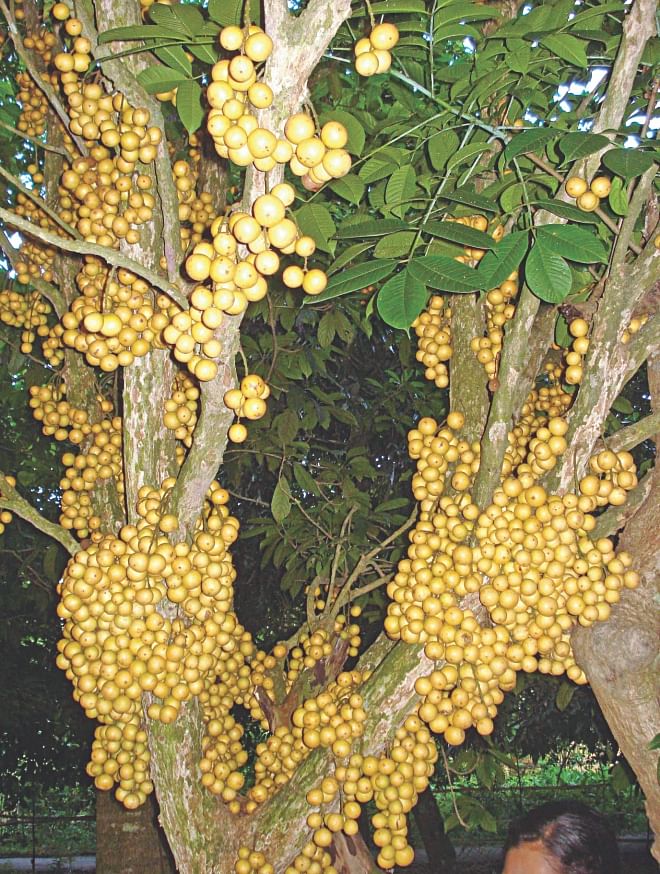Mouthwatering latkan turns exportable

Burmese grape is now exported to different countries, much to the happiness of growers in the district that sees large-scale cultivation of the juicy nutritious fruit locally called latkan.
Starting early 1990s, latkan cultivation has gained much popularity in the district in recent years, said officials of the Department of Agriculture Extension (DAE).
The United Arab Emirates, Dubai and Saudi Arabia are some of the countries where latkan from Narsingdi is exported, said Subhas Chandra Gyain, agriculture extension officer of DAE in the district.
A large number of marginal farmers mainly in the reddish lands of Shibpur, Raipura, Polash and Belabo upazilas of the district have been able to change their lot by cultivating latkan in the past few years.
Many people now cultivate latkan on their house premises.
Two saplings need eight to ten feet space to grow well and the tree bears fruit within three or four years of plantation.
"Latkan tree generally grows on high fallow land where scope of other crop cultivation is limited. Around 200 saplings can be planted on a bigha of land, which produces 100 to 120 maunds of fruit on an average per year," Subhas Chandra Gyain said.
The small round tasty fruit has high demand and sells for Tk 50-60 per kg now.
"I spent Tk 60 thousand for latkan cultivation this year and sold the produce for double the amount to a buyer from Dhaka. He would export the item abroad," said Babul Mia, a farmer of Belabo upazila in Narsingdi.
"I planted over 500 latkan saplings on my three bighas of land at Borabo five years ago. The yield is good this year and harvesting began in the first week of Bangla month Ashar," said Dipu Dey of Polash upazila.
According to unofficial sources, there are at present 10 lakh latkan trees in the district and each tree bears 20 to 30 kg of fruit every year.

 For all latest news, follow The Daily Star's Google News channel.
For all latest news, follow The Daily Star's Google News channel. 



Comments